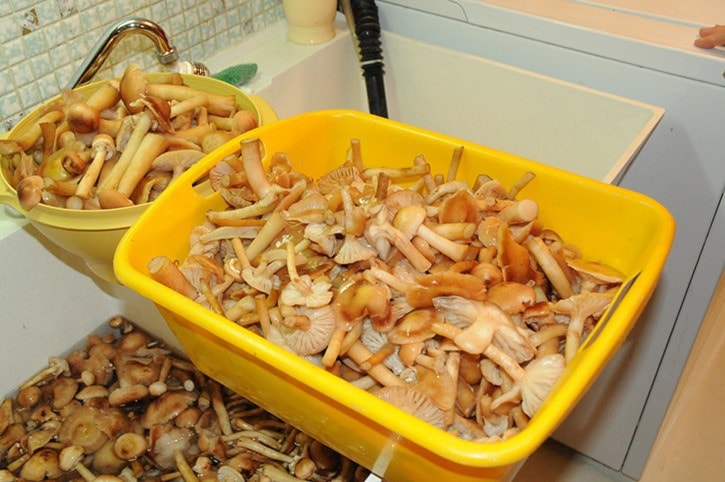A day spent nel bosco (in the woods) can bring tangled hair, bug bites, a tumble or two onto the forest floor and the need to blow a whistle to ward off nature's curious critters.
Besides outdoor adventure, this year a day in the forest can also bring a motherlode of golden delicacies that after a quick wash, are ready for the frying pan along with some olive oil and garlic.
The hot summer weather mixed with a good douse of rain and fall sunshine, means a 50-year Trail tradition is especially ripe for the picking because “stumpini” are more abundant than usual.
A quick search through online images to uncover exactly what a stumpini is didn't reveal much, but after decades of harvesting fungo (fungi), East Trail's Rina Cescon knows how to identify, pick and prepare the mild flavoured mushroom.
The bisnonna (great grandmother) and her husband Decimo Cescon, have been out to their covert forest areas between Rossland and Salmo a number of times this year, and each time, managed to bag about 100 pounds of stumpini.
But it isn't about the bounty that is later sauteed fresh, canned in quarts or gifted to friends and family.
It's about the thrill of walking through often pristine woods, and reminiscing about days when she first started foraging beside her father Luigi Zol, and other friends, now gone.
“My husband and I know our spots because we've been going out for so many years,” said Rina. “But it is more about the fun adventure and giving them away to the people who can't go out there anymore.”
She has come across the elusive shaggy manes and morel varieties, but stumpinis are much more common in the West Kootenay region and easy to spot – because they grow in large clusters on tree stumps.
“People are finding them every where this year,” said Rina. “It's true each time we went, we found so many we ran out of bags, and couldn't collect more.”
People can be leery about eating wild mushrooms because most kinds are inedible and some types are poisonous.
But after so many years of practise, Rina noted that foragers must know their terrain and pick only in unspoiled forest areas – far from highway fumes and any other discarded man-made debris.
“We pick in the forest where it's very rough, and you can tell that by the falls we take,” she laughed. “Just last week I took a real good spill. I was telling everyone to watch out and I ended up falling face first.”
The enjoyment of a day in the woods is reason enough to seek out wild mushrooms, but the taste of a stumpini is much more fresh and dewy than varieties found in plastic containers in the grocery store.
When looking for mushrooms, bring a basket or paper/cloth bag and a knife and specimens should be fleshy, not dried out or decaying.
Most important says Rina, is to never go harvesting alone.
“There is always a group of us,” she added. “We bring at least two or three others. And more than finding mushrooms, it's the memories, fun and giving them away to friends who can't go into the bush anymore.”
